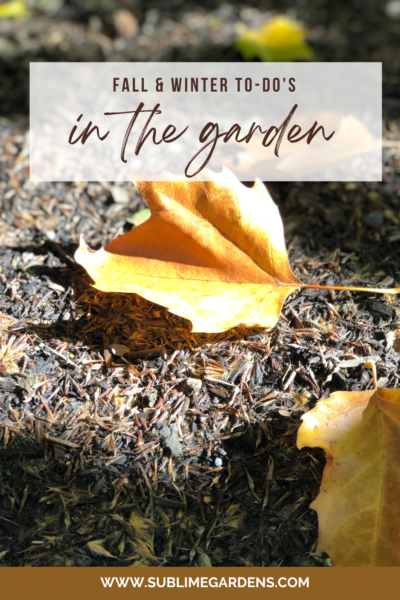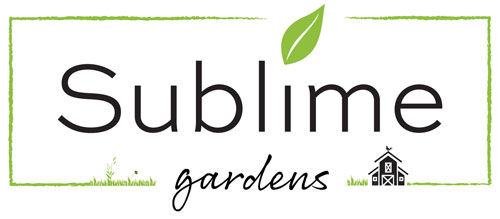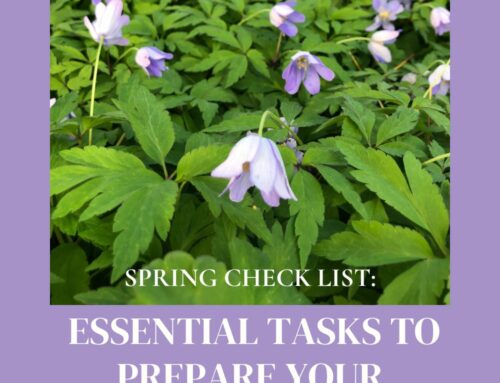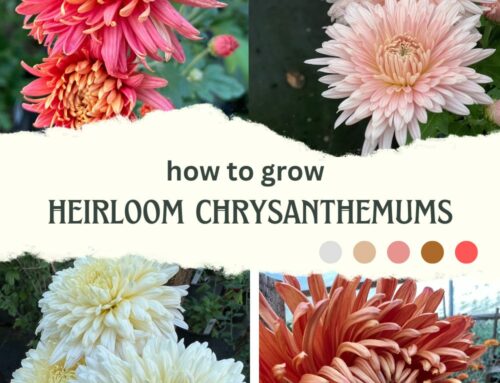
Are you enjoying the colors of fall, the return of clean fresh air, and the build-a-fire-and-make-a-pot-of-chili weather like I am? Although we can finally take a breather and settle in to a slower more intentional pace, there are a number of tasks still to be done in the garden. The following is a list of tasks that can be done throughout the fall and winter months to ensure your plants are healthy come spring time.
November– January
Lawn
- Stay off of your lawn as much as possible when frozen or extremely wet
- Keep leaves raked and debris off of your lawn
Planting beds
- Plant spring-blooming bulbs, woody shrubs, trees, ornamental grasses and perennials up until the point at which the ground is frozen or too saturated from heavy rains
- Rake (un-diseased) leaves into open areas. This will act as a mulch and weed-barrier, covering weed seeds and bare soil. As the leaves decompose they will feed the micro-organisms and add organic matter to the soil
- Sheet mulch areas where you may want to create new planting beds by laying down cardboard (with tape removed and overlapped by 6″) and then top-dressing with leaves, compost, or woodchips. Come spring you can plant directly into the area. If cardboard has not fully decomposed you can usually just push it to the sides around your plant
- Keep an eye on plants that are not exposed to rains, such as those under eaves or in containers on covered entry ways and porches, and water when necessary
Other
- Assess your garden and note areas that have “holes” where plants have died or need replacing for other reasons. Make a list and check out our nursery inventory 🙂
- You may want to test your soil in problem areas to determine nutrient needs in preparation for spring
- Clean & sharpen garden tools and lawn mower blades
- Clean storm debris and leaves from patios, walkways and gutters to prevent staining, moss and weed growth
February – March
Pruning
The best time to prune most woody shrubs and trees is right before they come out of dormancy and begin to grow in spring. This is typically in February- March in the PNW. Wherever you are, it is beneficial however to wait until deep freezes have passed. If you’d like a bit more info and visuals on pruning you can read more on this oldie but goodie blog post on pruning
- Thin out dense shrubs and trees to increase light and air flow and prevent disease. Focus first on pruning out dead, damaged or diseased stems, then make thinning and/or heading cuts to reduce size if needed
- Clean up perennials, ferns & grasses before new growth starts by removing dead and old tattered growth. Note that the reason I don’t cut back most of my flowering perennials until late winter/early spring is because flowers that develop seed pods like rudbeckia, echinacea and many flowering shrubs provide a good food source for birds over the winter
- Cut back grasses (not all grasses should be cut back completely so research the plant first), ferns, the foliage of hellebores and Epimedium to the ground
Lawn
- Continue to remove leaves and debris from lawn
- Tune up lawn mower in preparation for spring
- Start mowing at height of 2.5”-3.5” when new growth begins
Weeding
- Dig out perennial weeds (such as dandelions, buttercups and morning glory) using a Hori Hori garden knife to get entire root. Note that a weed is only a weed if you don’t want it growing where it is. There are beneficial uses to many so-called “weeds”. You can read more about edible weeds here
- Remove annual weeds (such as shotweed and chickweed) using a Hula Hoe. Do this before they go to seed to prevent them from spreading
Planting Beds
- Start planting again! You can resume planting again as soon as the ground is not frozen or overly saturated
- Mulch before plants begin growing again. Remove weeds first and then apply a 1-2″ layer of mulch immediately to cover exposed weed seeds (which keeps them from germinating). Mulch provides nutrients and encourages microbial activity, regulates the temperature of the soil, reduces erosion and holds in moisture. Keep mulch away from the crown of plants and the trunks of trees. My mulch of choice for planting beds is a composted fine fir bark from Plant Mulch Co in Snohomish. Tell Amy I sent you!
- Mulch with wood/arborist chips in native buffer areas, pathways or anywhere that you don’t plan to work the soil yet want to control weeds. You can get free wood chips by registering on ChipDrop
- Prepare vegetable gardens by weeding and amending with compost. We have written several articles over the year on compost that you can read about here
- Plant cool season flowers like sweet peas, snapdragons, larkspur, feverfew, etc. (a great resource for learning more about cool flowers is this book) and vegetables like peas, broccoli, cabbage, kale and other greens, 6-8 weeks before your anticipated last frost, or when soil is above 40 degrees
- Start sowing seeds indoors for warm season flowers and vegetable crops. Refer to individual seed packets for recommend sowing and planting out times
There you have it, your fall through winter to-do list! If you have any questions feel free to leave them in the comments.
Heidi







Leave A Comment